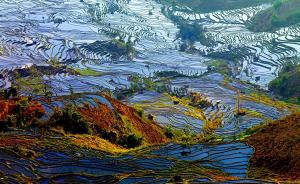Chinese Spring Festival
Spring Festival, popularly called 'Guo Nian' in Chinese and means passing year in English, is the most widely observed festival throughout the year in the whole country. Chinese Spring Festival or the Chinese Lunar New Year, is the new year of Chinese traditional lunar calendar. To the Chinese people it is as important as Christmas to people in the West. It is spent between January and February: The exact date varies, depending on Chinese Lunar Calendar. For example, Chinese New Year's Day in 2007 was on February 18. The year 2007 is the Year of Pig in Chinese zodiac system.
The dates for this annual celebration are determined by the lunar calendar rather than the Gregorian calendar, so the timing of the holiday varies from late January to early February. To the ordinary Chinese, the festival actually begins on the eve of the lunar New Year's Day and ends on the fifteenth day of the first month of the lunar calendar. The 15th of the first month, which normally is called the Lantern Festival, means the official end of the Spring Festival in many parts of the country.
Origins and Legends of the Spring Festival
The name of 'Spring Festival and Nian' comes from Chinese agriculture. This festival originated from ancient sacrifice ceremonies in the Shang dynasty. According to the ancient legend, "Nian" was a sort of fierce and cruel beast living in the forest. It went out of the forest to attack, kill and even eat the people at the towns once a year. At that time, people knew little about the beast and could not found no way fighting against it; their life born with extreme fear. Gradually, people observed and understood the habits of beast. They found some ways avoid the beast when it indulged in willful severity. What to do against the beast got into a custom and go on up to now.
People often wonder why the date for Chinese New Year changes each year. The Chinese calendar is a combination solar/lunar calendar, based on a number of rather complex astronomical calculations, including the longitude of the sun. Chinese New Year falls on the second new moon after the winter solstice (all months begin with a new moon).
It was in recent times that people called the New Year as the Spring Festival. Although China had conducted legislative reform for several times, Chinese traditional calendar was still applied, only after the Revolution of 1911, the Gregorian calendar had begun to be applied. For distinguishing two new years in Gregorian calendar and Chinese traditional calendar, additionally, the New Year in Chinese traditional calendar is around the Beginning of Spring, so people termed the New Year in Chinese traditional calendar as the Spring Festival.
Things to do at The Spring Festival
Preparations for the Spring Festival or Chinese New Year begin the last few days of the last moon. The first thing is to clean houses thoroughly. The cleaning often starts from Feb. 24 on Chinese lunar calendar. In Chinese opinion, the 'Cleaning' also includes debts repaid, hair cut and more.... What they do just means that they want to meet a completely new year without any unpleasant thing.
Another kind of preparation Chinese like to do is shopping, 'Bei Nian Huo' in Chinese. Chinese people buy a lot of food, new clothes and more daily-used articles, which is enough for an 'abundant' festival.
Then houses are festooned with decorations: Spring couplets and big character of "Fu" (means happiness, and the character 'Fu' is put upside down on doors, windows and means that happiness is coming), paper joss are displayed everywhere around the houses as a prayer for good luck. Also, paper scrolls bearing auspicious antithetical couplet (as show on both side of the page) and in many homes, people burn incense at home and in the temples to pay respects to ancestors and ask the gods for good health in the coming months.
On New Year's Eve, all the members of Chinese families come together to feast. Jiaozi is popular in the north, while southerners favor a sticky sweet glutinous rice pudding called Nian Gao. Then they keep staying late up to wait for the coming of new years. Guo Nian, meaning "passing the year" in Chinese is the common name among the Chinese people for the Spring Festival. It actually means greeting the New Year. At midnight at the turn of the old and New Year, the whole family goes on a solemn rite within their house, called 'Bai Nian', and prays for a coming wish year. People used to finish the rite by letting off firecrackers, which serve to drive away the evil spirits and to greet the arrival of the New Year. In an instant the whole city would be engulfed in the deafening noise of the firecrackers.
From the first day of lunar New Year, Spring Festival is a time for family reunions, for visits with friends, for good wishes for the coming year. In addition, the whole family will eat dumpling together. Friends and relatives will call on each other to exchange greetings and wish another the happiest possible New Year.
How Chinese celebrate the Spring Festival
In China, New Year's Day is a solemn occasion. Every family performs religious rites at the family altar. In order to rejoice at the New Year, people wished others a happy new year and blessed heartily. Some stick calligraphies full of joy on doors, most of them were antithetical couplet, phrase, individual character, such as: blessing, longevity, luckiness, propitious New Year and so on. Whereas, some people pasted paper-cuts for window decorations to do away with the old and set up the new, the patterns of paper-cuts mainly consisted of figure, flower, character, any of the twelve animals representing the twelve Earthly Branches, and other animals.
Before the eve of the New Year, everyone tries to come back home from every corner of the country to join the entire family, just like Americans' practice for Christmas, to greet the New Year. A New Year big dinner is served. After the meal, the table is cleared, dishes washed and put away. Then it is time to undertake final preparations to meet the New Year.
In the morning, people put on their new clothes and shoes. Men, with their wives, call on relatives and friends to wish them a "Happy and Prosperous New Year ". The caller is served tea with sweet-meats; melon seeds, both red and black; and fruits and delicacies such as puffed rice cakes, dump-lings and deep-fried round doughnuts. In addition, liquor and tobacco are offered. Before leaving, the well-wisher present gifts of money wrapped in red paper to all the unmarried children of the family. Starting from the New Year's Day, people began going out to visit friends and relatives, taking with them gifts such as fruits, wines, flowers, etc. This period was a time for visiing and amusement. Common expressions heard at this time are: Guonian Hao (Happy New Year). People also enjoy all sorts of entertainment, going to the temple fairs, treating themselves to the local delicacies, and watching performances of fold art forms, which usually include ballads singing, story telling, comic dialogues, clapper talk and cross talk.
During this period, quarrels are to be avoided. Words with bad connotations such as defeat, illness, surgical operations, a coffin or death are not to be used. Dishes are handled carefully, for breaking a dish on New Year's Day indicate bad luck for the coming year. An important tradition on New Year's Eve is for families to gather together and spend the evening preparing jiaozi or boiled dumplings. According to Chinese Culture, it is common to hide a coin or Chinese date in some of the dumplings. Whoever gets these dumplings will supposedly have good luck in the coming year. Give out money packets - On New Years day, children receive leisee - red packets decorated with gold symbols and filled with "lucky money". Serve festive foods - Throughout the New Years season, certain foods are served because they symbolize abundance and good fortune. Besides preparing special dishes, tangerines and oranges are often passed out to children and guests, as they symbolize wealth and good luck. Prepare a Tray of Togetherness - This is a circular tray with eight compartments, each containing symbolic foods such as lotus seeds and lychee nuts, which provides a sweet beginning to the New Year.

 China Photography Tours
China Photography Tours  First-Time China Tours
First-Time China Tours Luxury China Tours
Luxury China Tours

